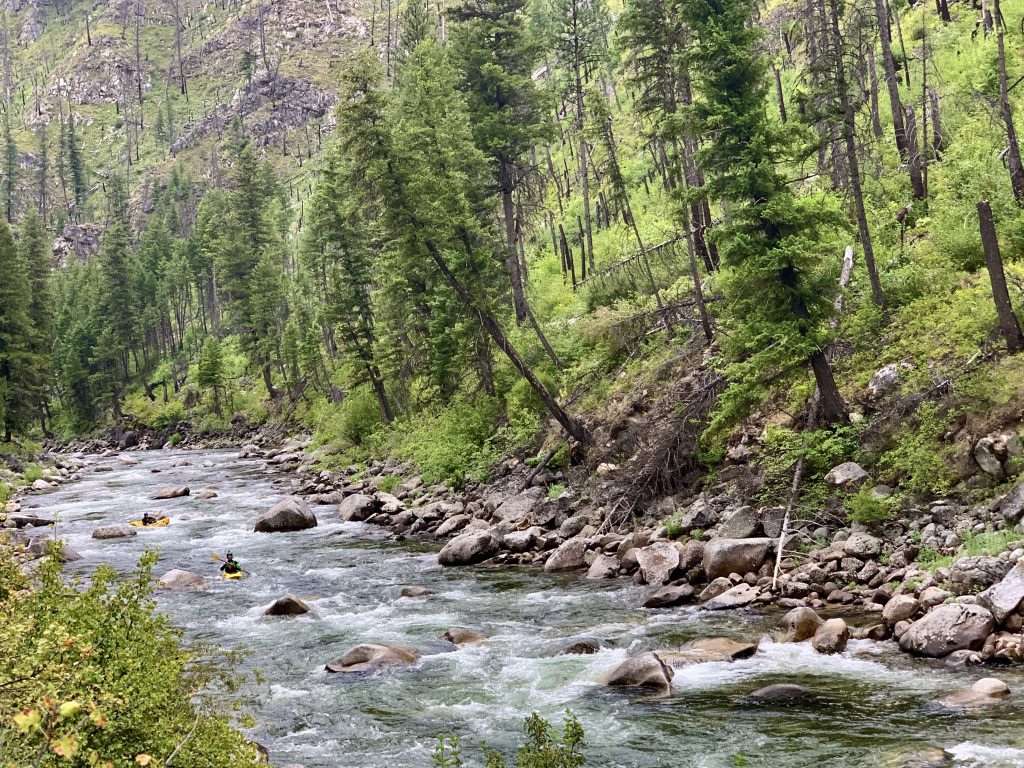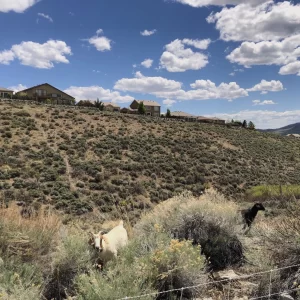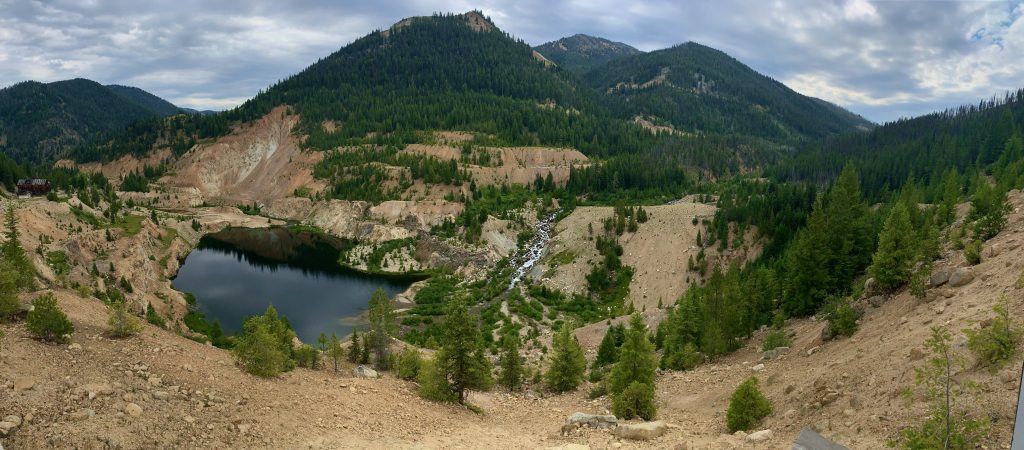
A proposal to reopen and expand an existing gold mine in Idaho has raised concerns among environmentalists, nearby Tribes, and recreationalists. The mine is located at the headwaters of a tributary to the Wild and Scenic Main Salmon River, which is the second-longest free-flowing river in the United States. Conservation groups say the mine’s location would negatively impact the entire river drainage both at the site and downstream of the mine, thus affecting water quality, wildlife habitat, and even endangered fish species.
The Canadian mining company Midas Gold is proposing a large environmental restoration and mitigation effort to reduce the impacts of the mining project. Their proposal includes building a fish tunnel used to divert the East Fork South Fork Salmon River around one of the mining pits, thus allowing fish passage to their breeding grounds while the mining is taking place in the river bed. A fish tunnel such as this one has never been used in a river before, causing conservationists and biologists to question whether it will work.
The East Fork South Fork Salmon River provides habitat for Chinook Salmon, Snake River Steelhead trout and Bull trout, all of which are considered threatened under the Endangered Species Act. Mary Faurot, a fish biologist who spent a good chunk of her career working in the Salmon drainage, has concerns over the efficacy of the tunnel, and whether fish will use it or not.
“They’re going to put the fish in a tunnel, which is very experimental. And the rationale for its success is really weak,” she says.
Faurot says there is insufficient evidence to prove that the fish will use the tunnel. Midas Gold has provided several examples of fish tunnels that have been successful at allowing fish passage between two reservoirs, but Mary says there’s no evidence it would work in a river:
“It’s never been done for a place with these kinds of physical characteristics and for the species we are talking about. Not documented at all.”
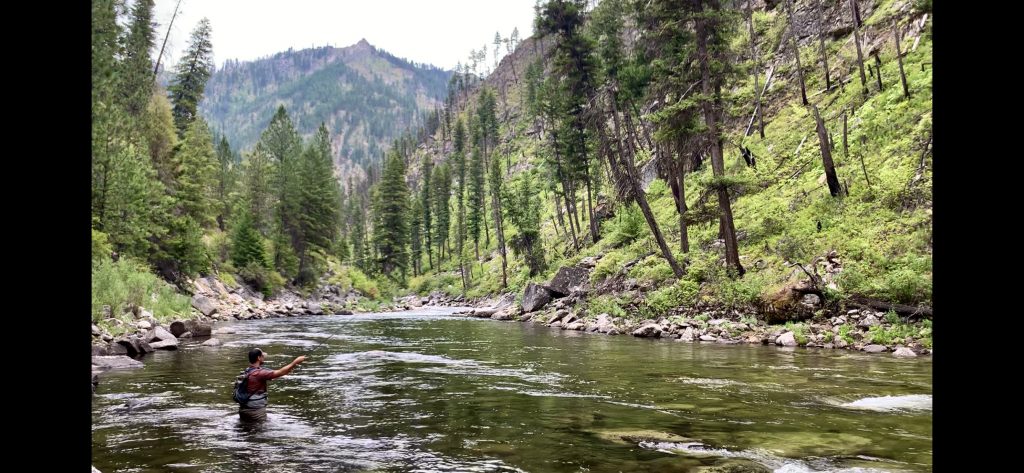
Faurot is also concerned the Forest Service may be approving the project too quickly, thus not allowing enough time for proper review of the environmental impacts. The Stibnite Gold Project’s Draft Environmental Impact Statement (DEIS) was released for public review on August 14th, 2020, with 60 days allowed for public comment. This 6,000-page document is required by federal law under the 1970 National Environmental Policy Act (NEPA), which requires all federal agencies to prepare Environmental Impact Statements on the effect of their actions. The DEIS details five different proposed mining plans, with four of them being alternative action plans, and the fifth being a no action plan.
Conservationists, scientists, and the Nez Perce Tribe all raised concerns over the short timeframe allotted for public comment, and the public comment period was extended 15 more days. Even with the extension, Faurot says this allotted time is shorter than what is normally allowed for public comment on a document of this size. “One hundred and twenty days for a project of this scope and scale is what other mines have had for comment periods.”
Midas Gold successfully lobbied at the state and federal level, says Reese Hodges of Idaho Rivers United. He says that’s resulted in the Stibnite Gold Project having an expedited environmental review, via an executive order issued by President Trump in January, 2017.
“This project has a special designation at the federal level as a High Priority Infrastructure Project. And so basically what that means is that, in terms of federal permitting, this project is being fast-tracked under that designation. And so all of the agencies that are involved are encouraged to speed up the permitting process.”
Despite concern from biologists and conservationists, the mining company says 45 days is regulation for public comment periods, and is the length deemed acceptable by the government.
“Seventy-five days is almost 60% more than the baseline of what’s required by law. That’s a lot of time for the public to access this information and review it. So we’re confident that the public has had plenty of time and availability to review the project,” says Mckinsey Lyon, the VP of External Affairs for Midas Gold.
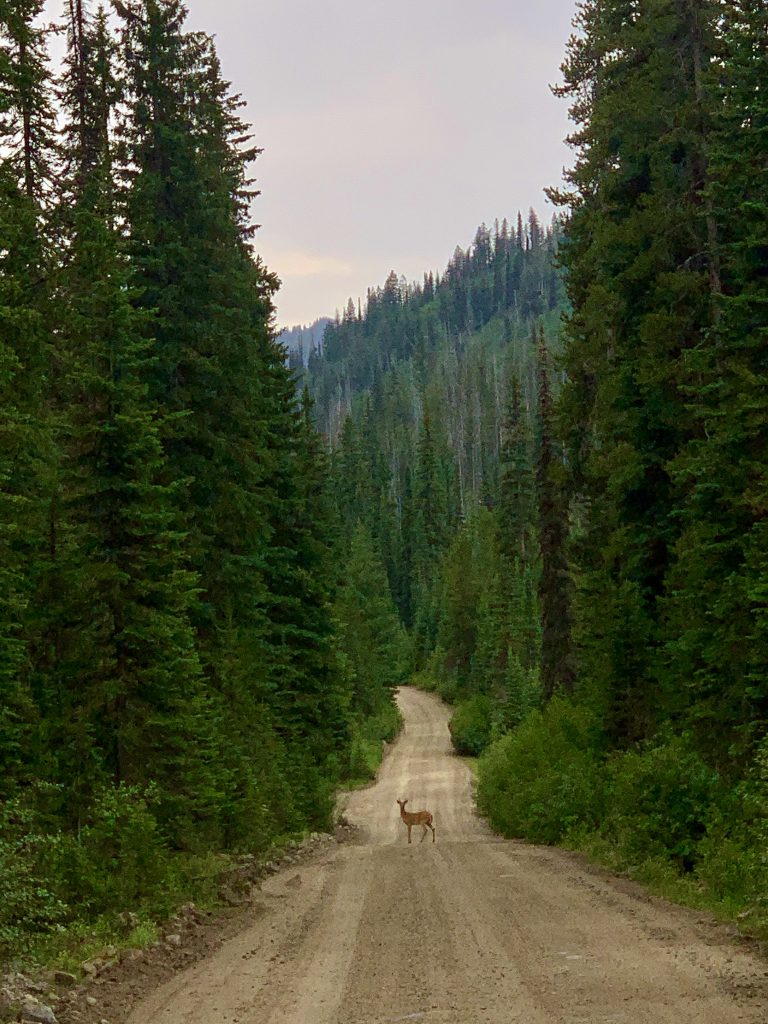
The Nez Perce Tribe is in strong opposition to the Stibnite mine, largely due to the threat it poses to endangered fish populations in the river drainage.
The Tribe is allowed to fish these waters, per a treaty with the United States that reserves “the right of taking fish at all usual and accustomed places in common with citizens of the Territory; and of erecting temporary buildings for curing, together with the privilege of hunting, gathering roots and berries, and pasturing their horses and cattle upon open and unclaimed land.”
The Tribe’s rights count on the continued existence of the natural resources. Since the Stibnite Gold Project is entirely within the Tribe’s aboriginal territory, the Tribe is concerned about harm coming to those resources, which will in turn harm the Tribe.
“We’re always trying to look out for future generations, and Midas Gold isn’t going to stick around here. They’re going to get the gold and they’re going to go. And then we’re left with whatever they leave us with,” says Emmit Taylor, the Nez Perce Tribe Fisheries Watershed Director.
Taylor says the Tribe has put an enormous effort into putting together comments to submit to the Forest Service about the Draft Environmental Impact Statement (DEIS). The Tribe is particularly concerned with environmental impacts downstream of the mining site.
“We don’t think that [the DEIS] is adequate at all in describing what those impacts can be downstream,” says Taylor.
“This project is going to increase temperature in the stream for a long time, that is going to have impacts downstream. Then you add climate change on top of that. What are those impacts going to be to fish populations downstream? Those sorts of things are not adequately analyzed at all in the DEIS.”
But the DEIS does show that the mine could increase water temperature as much as nine degrees Celsius on the East Fork South Fork Salmon River, depending on which proposed alternative is chosen. Constructing the mine would remove trees that shade the streams that flow into the river as well as the main stream itself, says biologist Mary Faurot. She says the mine infrastructure would also alter runoff patterns meaning less cool water flowing into the river. Bull trout require some of the coldest water of all species native to the Rocky Mountains, and biologists say even a few degrees warming could harm the threatened species.
Midas Gold says their goal is to adequately restore the legacy mine that is already present at the site, and that they are open to listening to comments presented during the public comment period. In response to a question about water temperature increases, Lyon said, “I will just be very forward and say that water temperature is one of those areas that we think the draft has really highlighted some need for improvement and one that we’re willing to work on between the draft and the final.”
